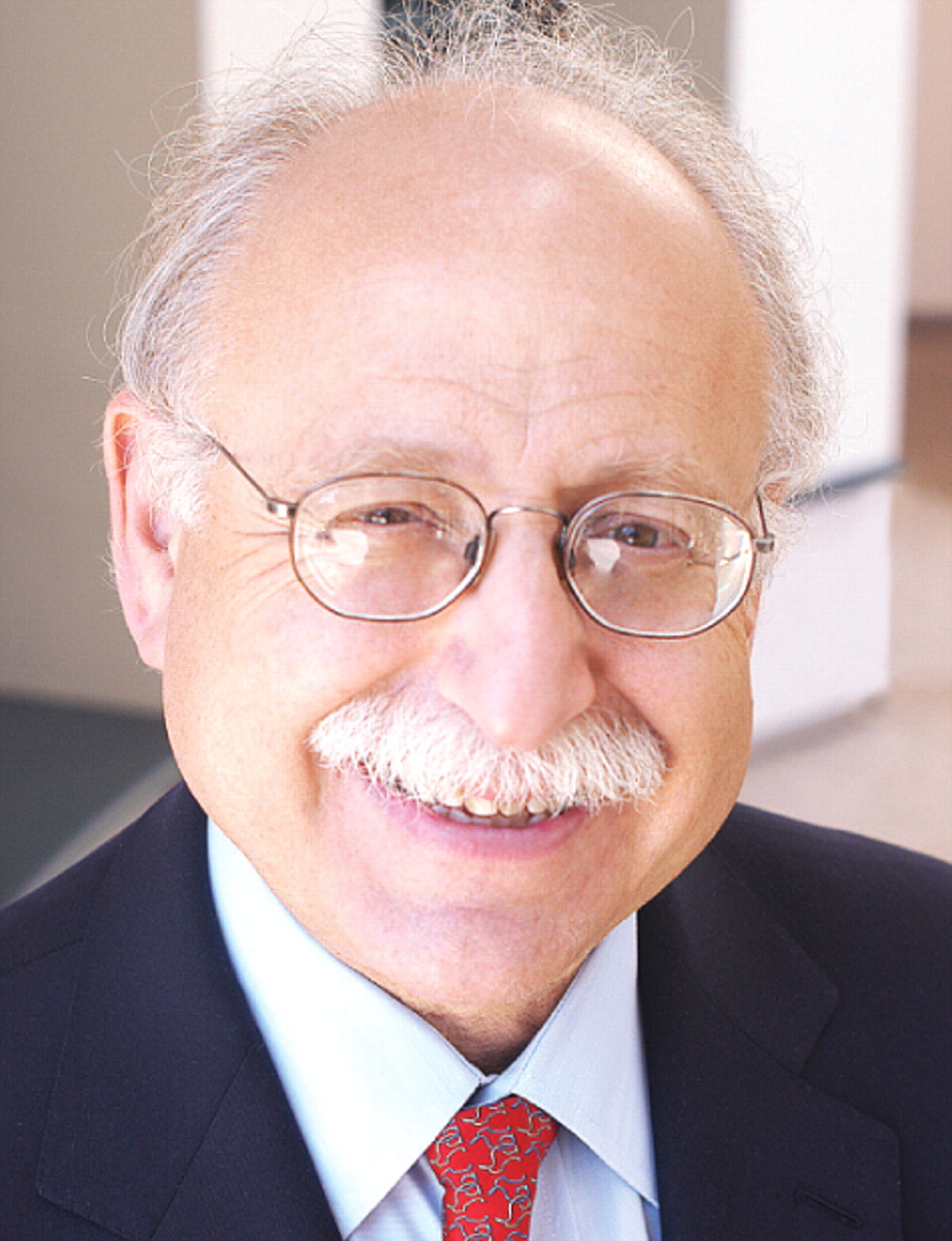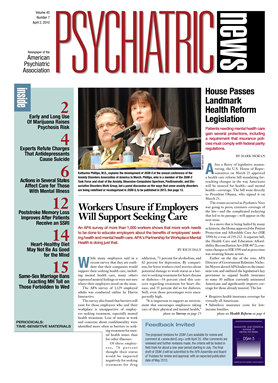I have written about
DSM-5 in past columns, but the recent release of the proposed revisions and the public responses prompt me to put down some of my reactions to the recent coverage. We posted the proposed changes on February 10, and in the first four weeks, more than 360,000 different people logged onto the Web site at <
www.dsm5.org>, resulting in 27 million hits. This level of transparency is unprecedented in medicine. While portions of the draft criteria are being criticized as well as praised, the comments and conversations they generate will be valuable to the process and lead to a better
DSM-5.
There has been a lot of media coverage particularly in the traditional public press, and we especially appreciate the support of our Office of Communications and Public Affairs and our outside consultants, GYMR, in arranging individual reporter briefings as well as two teleconferences, one for the media and one for organizations involved in mental health.
Recent op-ed pieces have highlighted some interesting issues for our specialty. A few columns, primarily by writers who are not mental health professionals, have complained that the proposed new diagnoses are merely pathologizing normal behavior. One writer speculated about what would have happened if Mozart had been diagnosed and treated for a disorder such as attention deficit disorder. Would we have deprived our culture of the greatest of music? Another op-ed piece criticized the proposed diagnosis of mild neurocognitive disorder; it is derived from neurology and represents significant decline in cognitive function.
These worries have not been limited to the lay public—some psychiatrists have expressed the same thoughts as well. A careful reading of the DSM-5 revisions shows clear criteria for making specific diagnoses and delineates minimum, required levels of impairment or distress. Also, in some key areas such as drug dependence, we have corrected the proposed criteria to eliminate the risk that terminal patients on opiates would be diagnosed with substance abuse. However, we will need to be sure we are clear about the threshold for making any diagnosis. Doing so is essential to our credibility.
The critiques also illustrate a number of points about DSM and psychiatry. For one, there is a belief that psychiatrists somehow create mental illness when we list new disorders—perhaps to drum up business. In reality, we are reacting to the prevalence of psychopathology as the literature moves the field forward. Interestingly, there are nowhere near enough psychiatrists to care for all the patients with major psychiatric disorders in our country. Psychiatrists do not have to look for business. Second, some of the push-back reflects stigmatization of psychiatry and of patients. A good example is the diagnosis of mild neurocognitive impairment that is equivalent to the diagnosis that neurologists use for mild cognitive impairment. Our neurology colleagues are not criticized for identifying and naming this disorder. Third, everyone experiences some uncomfortable or difficult emotions, and it is easy for people to extend those experiences to believing they have a disorder—much as many of us as young medical students developed in our minds all sorts of serious illnesses when we studied pathology. Yet, DSM is clear that there needs to be a threshold of symptoms and of distress before a definitive diagnosis can be made.
As long as we have a transparent and accessible DSM, we should expect misinformed criticism from individuals who believe they are experts in our profession. One thing we can do to counter the criticism is to be precise with the language we ultimately use. Names of disorders need to be well considered, and we need to be clear in demarcating normal from abnormal affect and behavior. The comments coming into our Web site will go a long way to refining our proposals, setting the field trials, and developing the final text.
But the Web site is not the only place for you to provide feedback. There will be several sessions devoted to DSM-5 at our annual meeting in May. At least two sessions will permit participants to use a computerized audience-response system to answer specific questions posed by panelists.
Last, let me say a few words about the annual meeting. I am delighted with the final program. We have the best scientists and practitioners in our field coming to present new and exciting research as well as clinical pearls. This will be a superb meeting, and I urge all of you to register early (see
Register Now for the Meeting!). Please remember that the meeting begins on Saturday, so plan to arrive no later than Friday. One member dropped me an e-mail saying he could not believe how many useful and exciting sessions there were on Saturday, May 22, when he read the preliminary program in the February 20 issue of
Psychiatric News, and he had not even gotten to the rest of the program yet.
I look forward to greeting you all in New Orleans.


